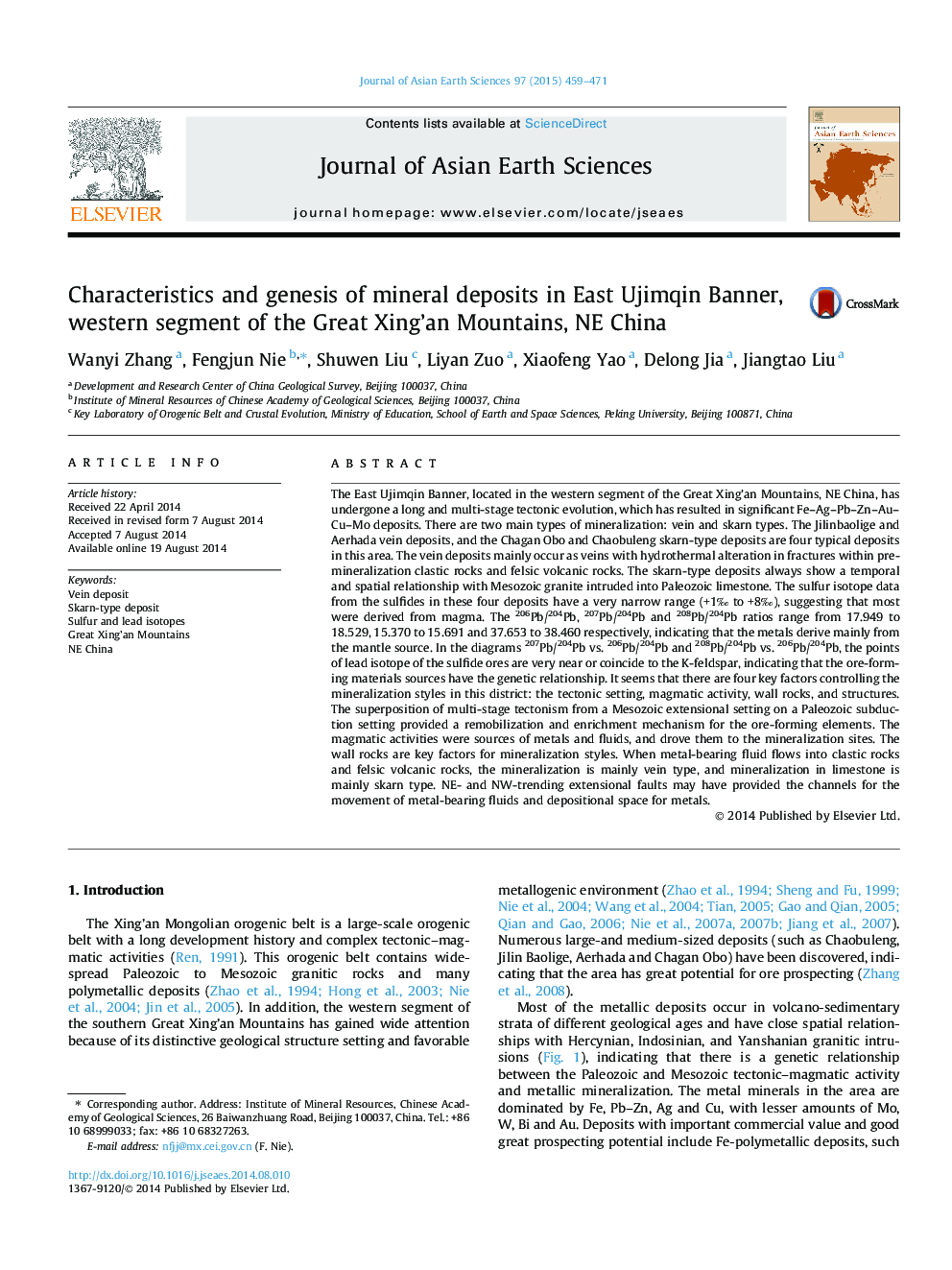| کد مقاله | کد نشریه | سال انتشار | مقاله انگلیسی | نسخه تمام متن |
|---|---|---|---|---|
| 4730449 | 1356758 | 2015 | 13 صفحه PDF | دانلود رایگان |

• East Ujimqin Banner has great potential for ore prospecting.
• The main metallic deposits in the area are vein deposits and skarn-type deposits.
• Strata, tectonics, and magmatic rocks controlled the formation of the two types of deposits.
The East Ujimqin Banner, located in the western segment of the Great Xing’an Mountains, NE China, has undergone a long and multi-stage tectonic evolution, which has resulted in significant Fe–Ag–Pb–Zn–Au–Cu–Mo deposits. There are two main types of mineralization: vein and skarn types. The Jilinbaolige and Aerhada vein deposits, and the Chagan Obo and Chaobuleng skarn-type deposits are four typical deposits in this area. The vein deposits mainly occur as veins with hydrothermal alteration in fractures within pre-mineralization clastic rocks and felsic volcanic rocks. The skarn-type deposits always show a temporal and spatial relationship with Mesozoic granite intruded into Paleozoic limestone. The sulfur isotope data from the sulfides in these four deposits have a very narrow range (+1‰ to +8‰), suggesting that most were derived from magma. The 206Pb/204Pb, 207Pb/204Pb and 208Pb/204Pb ratios range from 17.949 to 18.529, 15.370 to 15.691 and 37.653 to 38.460 respectively, indicating that the metals derive mainly from the mantle source. In the diagrams 207Pb/204Pb vs. 206Pb/204Pb and 208Pb/204Pb vs. 206Pb/204Pb, the points of lead isotope of the sulfide ores are very near or coincide to the K-feldspar, indicating that the ore-forming materials sources have the genetic relationship. It seems that there are four key factors controlling the mineralization styles in this district: the tectonic setting, magmatic activity, wall rocks, and structures. The superposition of multi-stage tectonism from a Mesozoic extensional setting on a Paleozoic subduction setting provided a remobilization and enrichment mechanism for the ore-forming elements. The magmatic activities were sources of metals and fluids, and drove them to the mineralization sites. The wall rocks are key factors for mineralization styles. When metal-bearing fluid flows into clastic rocks and felsic volcanic rocks, the mineralization is mainly vein type, and mineralization in limestone is mainly skarn type. NE- and NW-trending extensional faults may have provided the channels for the movement of metal-bearing fluids and depositional space for metals.
Journal: Journal of Asian Earth Sciences - Volume 97, Part B, 1 January 2015, Pages 459–471